Ask yourself this: How many minutes do you spend combing through your email inbox in search of something meaningful?
Since you’re reading this post about email parsers, you probably burn more time sorting your emails than you actually want to spend.
Even if you have a separate email address for business matters, it won’t be long before your inbox gets flooded by messages from associates, automated reporting systems, current customers, and prospective leads.
Oh — and don’t forget the random newsletters that you don’t even remember subscribing to.
Long story short, you need a capable email parser software by your side to automate the way you extract useful data from your emails.
And so the question becomes, Which email parser should you be using?
Allow me to share with you the main reasons why our users love our email parsing platform.
1. Usability
Let’s face it; using email parsers does require a bit of a learning curve.
Parserr, however, does a great job of keeping everything as clear-cut and intuitive as possible.
Upon creating an account, you are immediately brought to a simple setup process that will tailor the Parserr interface to your needs.
This involves sending a test email, specifying which part of the email contains data, identifying an existing automation platform, and so on.
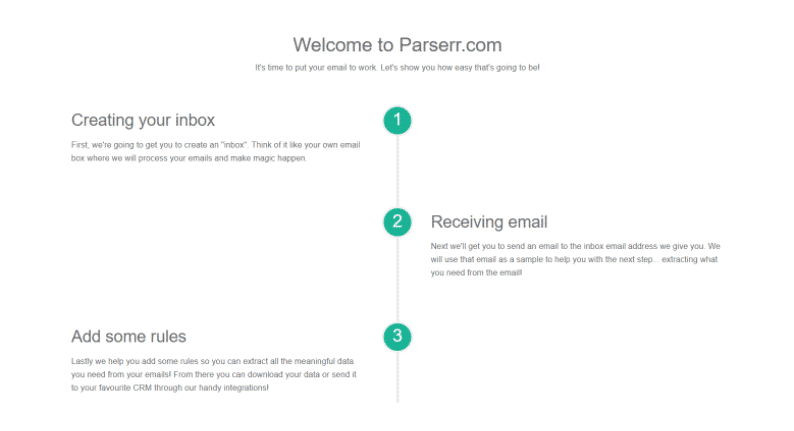
Right off the bat, Parserr briefly explains what each step will do and why they’re important.
A wealth of learning resources is also offered throughout the platform, including tooltips and tutorial videos.
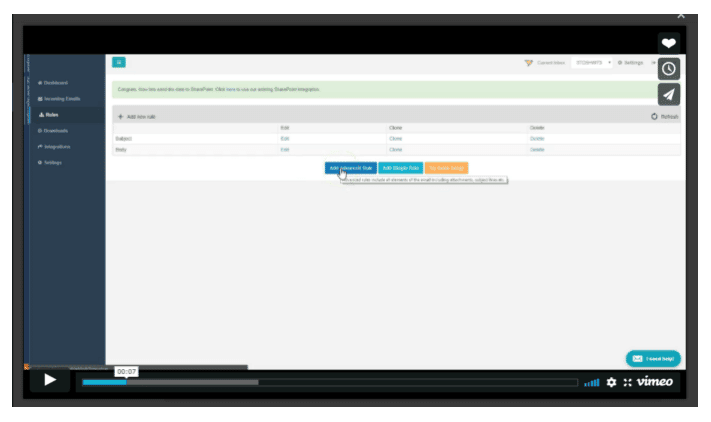
After the initial setup, you can also add new parsing rules whenever you need through the visual interface. Simply select the part of the email where you’ll extract data from, add a few filters, and then click “Save Rule.”
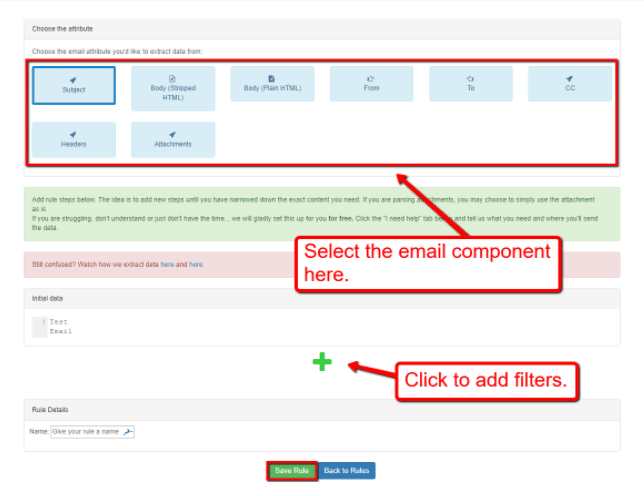
Remember that an email parser’s filters ensure that you only scrape relevant data from an email. As such, it will be covered in more detail later for Parserr and its competitors.
Going back to the aspect of usability, Parseur is another email parser software that attempts to make things simpler for users.
While Parseur’s interface is minimalistic, new users are sent straight to a page where they can create a “template” for data extraction.
This works by enabling you to manually select the parts of the email that must be extracted. There will be no setup process that will optimize the platform for your needs.
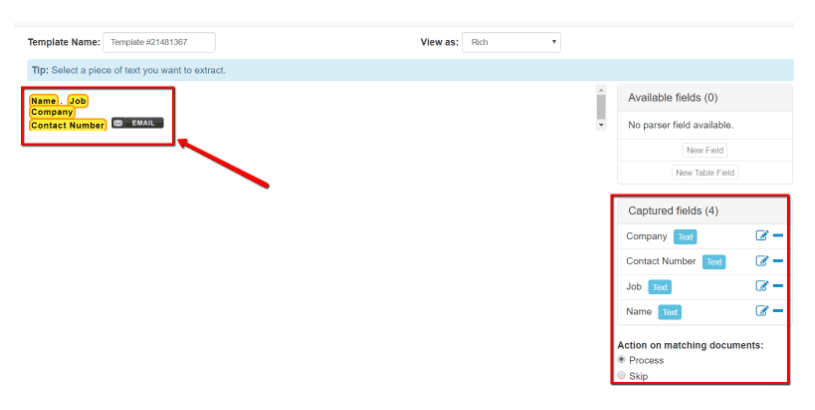
Once you select the email element you want to extract, you have to click the “New Field” button, add a label, and then click the check button to create a new rule.
Lastly, Mailparser.io deserves some credit since it also automatically creates a set of rules based on a test email, just like the initial setup process for Parserr.
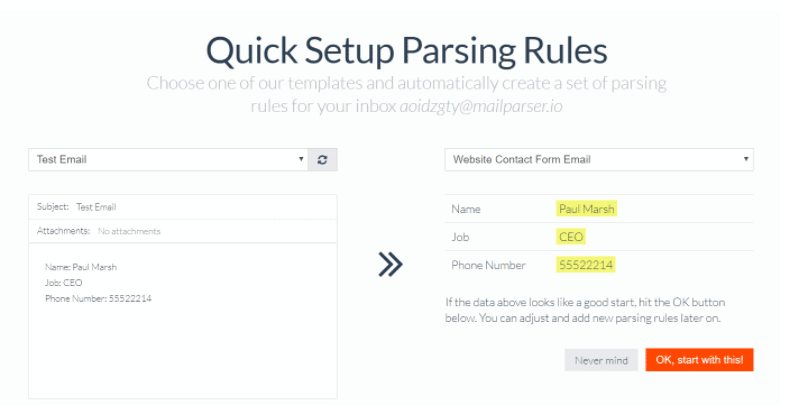
Unfortunately, its rule creation process doesn’t outline all the data fields that you can specify.
To put things in perspective, Parserr immediately shows you that you can pull data from the following email attributes:
- Subject
- Body (Plain Text/HTML)
- Sender
- Recipient
- Carbon Copy (CC) Recipient
- Headers
- Attachments
On the other hand, Mailparser.io will only show you the following:
- Subject
- Body
- Attachments
- Recipient
- Header
Does this mean you can’t create parsing rules that retrieve the email’s CC recipients and sender address? Luckily for Mailparser.io, it doesn’t.
However, you need to select these fields by clicking the “Recipients” button when creating parsing rules, which doesn’t make a lot of sense.
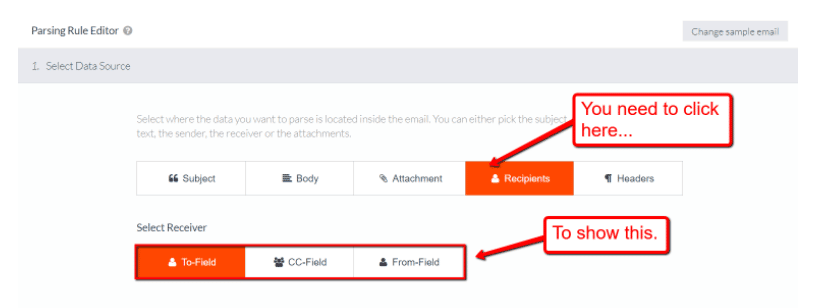
2. Data Extraction Filters
Now that we got user-friendliness out of the way, it’s time to focus on the email parsing rule filters of each platform.
First things first, you should know that Parserr has an “assisted” approach when it comes to creating parsing rules.
By clicking the green “plus” button on the rule creation page, you are presented with a set of rule categories that pertain to different parsing objectives.
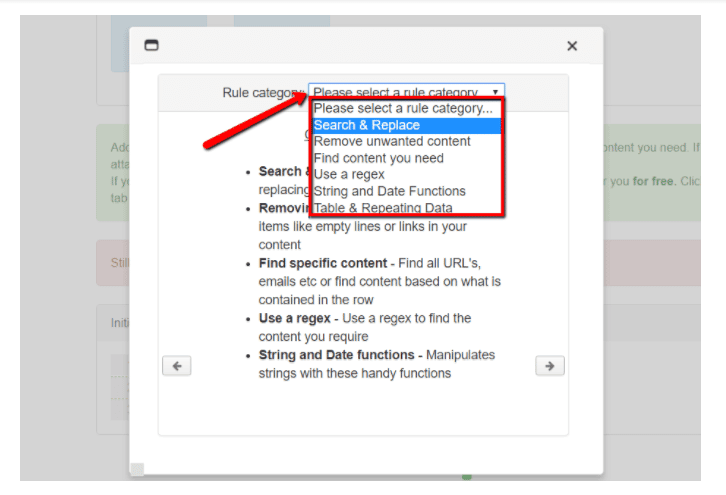
After you pick a rule category, you just need to scroll through the options and select exactly what you want to do. And as always, everything is concisely explained for your convenience:

From there, you can string together multiple filters to get down to the exact piece of data you want to extract.

It may seem like a tedious process at first, but it makes Parserr incredibly flexible when it comes to extracting data. This means you can extract similar pieces of data even if they come in different formats, such as contact form queries and automated reports.
Parseur, on the other hand, offers little control since parsing rules don’t even exist — you just have to manually select these attributes and then create new templates for every type of email you may receive.
For Mailparser.io, however, things begin to look a bit like Parserr. You also get more control over rules through filters, which will enable you to zero in on the data you need.

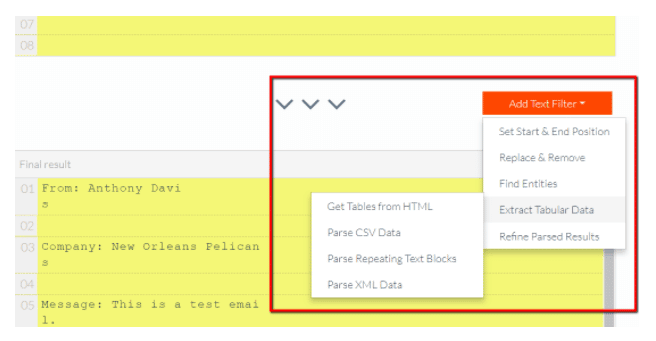
Unfortunately, these filters lack adequate explanations like the ones available from Parserr. This makes it difficult to determine which filter to use for specific situations.
3. Integrations
At this point, we now know how Parserr and its close competitors retrieve and filter email data. It now boils down to one aspect that makes email parsers effective — its integrations.
First off, Parserr allows you to utilize four integration platforms: Webhook, Google Sheets, SharePoint Online, and Zapier.
It’s as easy as clicking and activating the integration you want to use in your email parser. Through Zapier, you can also create customized integrations that will allow you to send data to over 1,000 online services — from email marketing platforms to cloud storage.
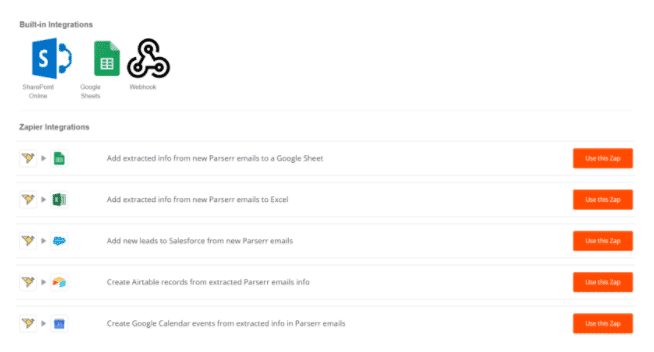
Next comes Parseur, which also depends on Zapier for the vast majority of its integrations. As a result, you can also use it to funnel data from emails into a large number of services.
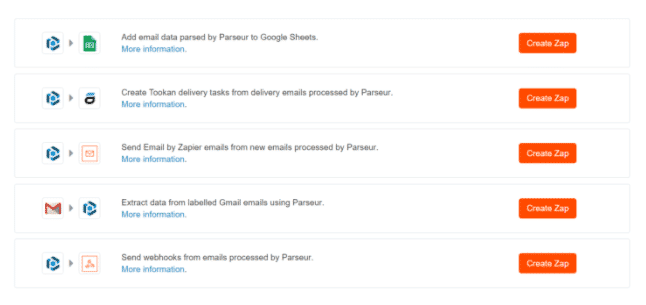
Finally, Mailparser.io relies on Webhook for integrations. Although it’s scalable, it’s not as simple nor intuitive to do than activating pre-built workflows from Zapier or Zaps.
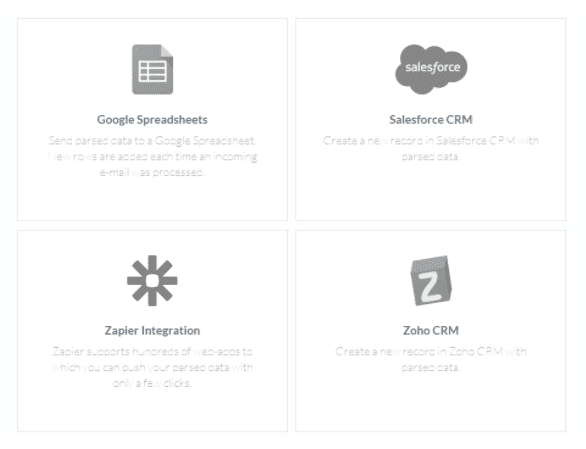
While Mailparser.io allows you to integrate with services that are supported by Zapier, you’ll need to create those Zaps yourself manually. This requires you to launch Zapier on a different tab, creating a custom workflow, and then pasting the Webhook URL:
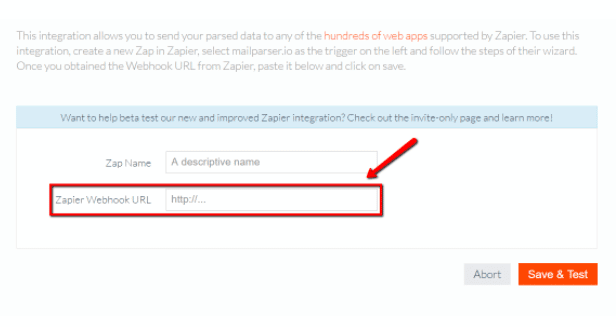
Conclusion
That’s it!
While each email parser software has specific advantages, only Parserr possesses all the points mentioned above (and then some).
When it comes to user-friendliness and data extraction filters, Mailparser.io does have a fighting chance. Parseur, on the other hand, is competent in terms of integrations.
Still, they don’t offer anything new that Parserr doesn’t already provide. And that’s why, if you consider using an email parser to streamline your online workflows, then your choice is clear.
Get Started










